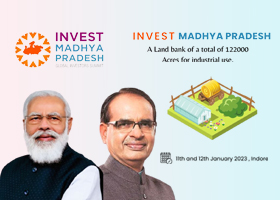-
CANBERRA: India-Australia partnership aims to bridge skill gap for future employment - April 15, 2024
-
HOUSTON: Mumbai boys in the final rounds of FIRST World Robotics competition to be held in Houston - April 14, 2024
-
MADRAS: IIT Madras NPTEL translates thousands of technical courses into several regional languages - April 10, 2024
-
MUMBAI: Shahid Kapoor opens up about the challenges faced by character actors in Bollywood - April 8, 2024
-
NEW DELHI: World Health Day 2024: Date, Theme, History, Significance and Interesting Facts - April 6, 2024
-
LONDON: Indian-Origin Teen In UK Gets “Life-Changing” Cancer Treatment - April 3, 2024
-
BENGALURU: Indian scientists unravel genetic secrets behind lumpy skin disease outbreak - March 30, 2024
-
NEW DELHI: Youngsters’ Increasing Stress Levels, Early Onset of Diseases an Alarming Health Trend: Apollo Hospitals Chief - March 28, 2024
-
MARYLAND: All About Pavan Davuluri, New Head Of Microsoft Windows - March 27, 2024
-
MUMBAI: Pyaar Kiya To Darna Kya turns 26: Kajol says THIS was the symbol of an innocent girl back then - March 27, 2024
JERUSALEM: “Nesher Ramla Homo”: New Type Of Early Human Found In Israel
JERUSALEM: Israeli researchers they had found bones belonging to a “new type of early human” previously unknown to science, shedding new light on the course of human evolution.
Archeological
digs near the city of Ramla by a team from the Hebrew University of Jerusalem
uncovered prehistoric remains that could not be matched to any known species
from the Homo genus, which includes modern humans (Homo sapiens).
In a
study published in the journal Science, University of Tel Aviv anthropologists
and archaeologists led by Yossi Zaidner dubbed the find the “Nesher Ramla
Homo type” after the site where the bones were found.
Dating to
between 140,000 and 120,000 years ago, “the morphology of the Nesher Ramla
humans shares features with both Neanderthals… and archaic Homo,” the
researchers said in a statement.
“At
the same time, this type of Homo is very unlike modern humans — displaying a
completely different skull structure, no chin, and very large teeth.”
Along
with the human remains, the dig uncovered large quantities of animal bones as
well as stone tools.
“The
archaeological finds associated with human fossils show that ‘Nesher Ramla
Homo’ possessed advanced stone-tool production technologies and most likely
interacted with the local Homo sapiens,” archaeologist Zaidner said.
“We
had never imagined that alongside Homo sapiens, archaic Homo roamed the area so
late in human history”.
The
researchers suggested that some fossils previously discovered in Israel dating
back as far as 400,000 years could belong to the same prehistoric human type.
The
Nesher Ramla discovery calls into question the widely-accepted theory that
Neanderthals first emerged in Europe before migrating south.
“Our
findings imply that the famous Neanderthals of Western Europe are only the
remnants of a much larger population that lived here in the Levant — and not
the other way around,” anthropologist Israel Hershkovitz of Tel Aviv
University said.
Dentist
and anthropologist Rachel Sarig of Tel Aviv University said the find suggested
that “as a crossroads between Africa, Europe and Asia, the Land of Israel
served as a melting pot where different human populations mixed with one
another, to later spread throughout the Old World.”
Small
groups of the Nesher Ramla type likely migrated into Europe, later evolving
into Neanderthals, and Asia, developing into populations with similar features,
Sarig said.
























